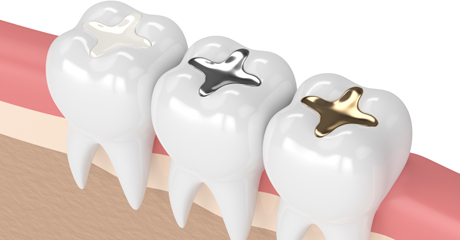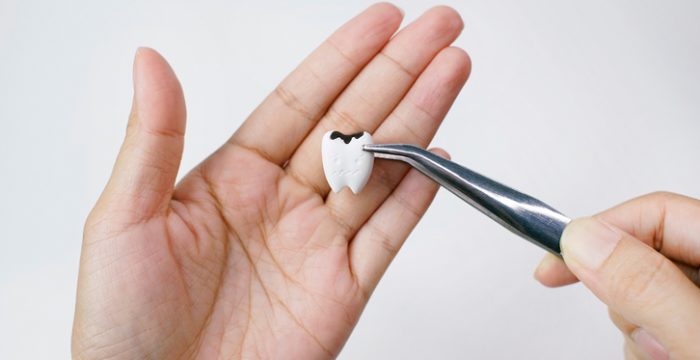The first procedure that is to be done before a dentist start the procedure for filling a cavity is that the tooth must be thoroughly cleaned by hand instruments and mechanical rotary instruments, called hand pieces. Then the clean tooth is further filled with either dental amalgam, composite material, gold or porcelain to restore the tooth to its original shape and size.
The most time honoured, economical material is the silver filling (also known as dental amalgam). It is composed of silver, tin, traces of metallic mercury, and various other compounds. Dental amalgam has been used safely in dentistry for nearly around 150 years. While some people have raised concerns over the health effect of mercury in the dental amalgam, the actual amount of metallic mercury in dental amalgam is less than the mercury found nowadays in seafood or polluted air. Swedish and American scientists could find no correlation between having new silver fillings and changes in the levels of mercury in the blood or urine. The American Dental Association still supports dental amalgam as a safe and effective filling material, especially for the cavities on the chewing surfaces of back teeth (bicuspids and molars). The amalgam can also be a health problem if the patient has a true allergy to mercury (true allergy to mercury is rare, and this condition must be ascertained by a physician).

An alternative to amalgam is the use of composites. Composites are plastic resins mixed with quartz fillers or other hard minerals that is named for its strength. Composites are widely used to fill cavities in the front teeth because they come in various shades that match the natural tooth colour. However, they are less suitable for cavities in the back teeth because they are softer than the amalgam and are more prone to wear down and chip with the continuous chewing. If the composites is inadequately “cured” with the special composite light, leakage of bacteria and saliva can occur under the filling. Such leakage causes tooth sensitivity to cold and sweets. Leakage can also causes the decay process to recur under and around the composite, causing subsequent fracture of the tooth.
Gold is an excellent material for filling teeth. It has good wear compatibility to the enamel of opposing and adjacent teeth. Gold adapts very well to the edges of a cavity and is totally inert or nontoxic. However, gold is expensive, is unsightly in colour, and is technically challenging to use. Therefore, gold fillings are rarely performed anymore.
Glass ionomer is made of acrylic and it is a specific type of glass material. This material is most commonly used for fillings below the gum line and for fillings in young children (drilling is still required). Glass ionomers release fluoride, which can help protect the tooth from further decay. However, this material is weaker than the composite resin and is more susceptible to wear and prone to fracture. Glass ionomer generally lasts 5 years or less with costs comparable to composite resin.

A new filling material that is increasing in popularity is porcelain. Even though it is almost as expensive as gold, the color of porcelain filling can be matched to the natural tooth color. Two appointments are necessary to perform the porcelain filling. During the first appointment, the dentist cleans the cavity and takes an impression of the tooth. A dental laboratory then creates a stone model of the tooth and fabricates the porcelain or any other constitute material for the filling from the tooth model. The porcelain filling is then cemented or “bonded” onto the tooth during a second appointment with the dentist.
